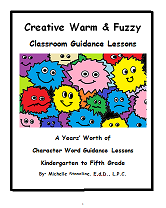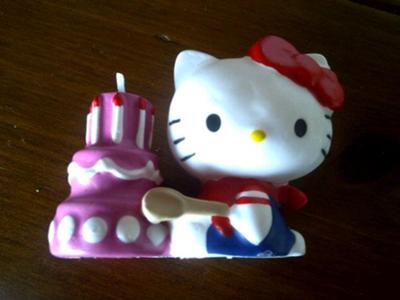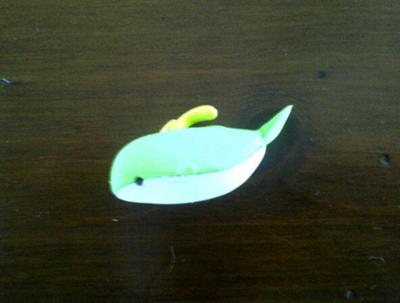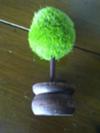Sandtray Therapy Class Midterm
by Amanda Johnson
(Mercer University)
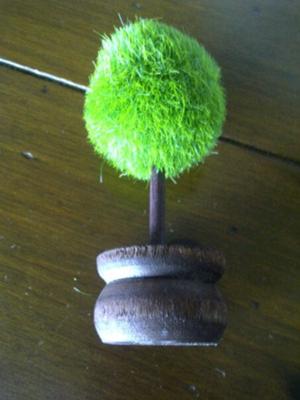
Sandtray Therapy Class Midterm
Amanda Johnson Culture Sand Tray Therapy Midterm 6/25/12
The culture I chose to research and present is the Japanese culture. I thought about the recent tsunami and frequent earthquakes that have devastated the country and its people. During these tragic times American residents, tourists, and of course Japanese residents are in need of counseling. When embarking on my research on this culture I looked for useful tips to help my fellow counselors navigate their way through this ancient culture. The Japanese culture is steeped in tradition and customs. It also has many prominent subcultures that bear mentioning.
When greeting someone in Japan it is customary to bow; the deeper the bow the more formal and respectful the greeting. A smaller head nod is acceptable for informal or casual greetings. When entering someone’s home or a room in the home, it is polite to take off your shoes. Special shoes or slippers are used only for the bathroom or washroom (http://www.facts-about-japan.com/japanese-culture.html). It is important to remember that Japan has a collectivist culture. Harmony is key to Japanese society. From an early age children are taught how to work together. ‘Saving face’ is very important to Japanese culture. Being honorable and protecting the family is very important in Japanese culture (http://www.japan-zone.com/culture/).
Gift-giving is also important in Japanese culture and knowing the proper etiquette is crucial. The way the gift is presented and wrapped is just as important if not more important than the gift itself. Gifts are given frequently and for many occasions, it may be helpful to get someone to help you pick out a gift that is appropriate for the occasion. Taking care to not give a gift that may represent bad luck could be hard if a foreigner is not aware of the customs. Avoiding the number 4, white flowers, lilies, camellias, lotus blossoms, or potted plants is a good idea because these are all associated with death or funerals. If you buy the gift in Japan, go ahead and have it wrapped in pastel colors if possible. Remember that gifts are not opened when received as is common in Western culture (http://www.kwintessential.co.uk/resources/global-etiquette/japan-country-profiles.html).
The first miniature I chose to represent the Japanese culture is a tree that looks like a bonsai tree. The bonsai tree is popular in the Japan and has taken become popular worldwide. It is a miniature tree that is grown in a container. It can be pruned to grow in different patterns. Some of the popular styles are broom style, a tapered trunk with a symmetrical top. The cascading style, which has the tree branches flowing downward. Or the windswept style in which the branches looked like they have been exposed to strong winds. Cultivating a bonsai plant is considered a calming and spiritual experience it also serves to allow people to fulfill the desire to garden in a small area (http://www.japan-zone.com/culture/).
The second miniature I chose is the very popular and iconic Hello Kitty doll. Hello Kitty has a cult following and was created by the Japanese company Sanrio (http://www.hellokittyuniverse.com/page/Hello+Kitty+Biography). I not only chose this miniature because of its popularity and iconic statues, but also to represent the incredible popularity of anime, comics, and video games with Japan’s youth. The earliest animation known to be created in Japan was in 1917. The modern style of anime was created in the 1960s modeled after Walt Disney’s creations but simplified to save time and money. Comic books experienced a drastic increase in the 1970s and were adapted into anime. Anime had achieved widespread accepted into Japanese mainstream in the 1980s (http://www.japan-zone.com/culture/).
The third miniature I chose is a whale. I chose this because of the controversy it symbolizes in Japanese culture. Whaling has been a part of Japanese history for over a thousand years and has recently come under criticism. Due to its location Japan’s diet is largely made up of seafood. Eating whale meat can be found throughout writings in Japan. For a significant amount of time in Japanese history whales have been used for food, oil, and other materials. Some whaling villages even set up shrines and worshipped the whales that they killed as gods. The U.S. has been fundamental in the banning of killing whales in national and international waters. The peak of whale consumption in Japan was in 1962 with a total of 226,000 tons of whale flesh sold in the country (http://www.facts-about-japan.com/japanese-culture.html).
Facts about Japan:
• Uncooked horse meat is a common dish in Japan
• Trains can become so crowded in Japan that staff have to shove passengers in to fit
• Mt. Fuji is the tallest mountain in Japan and it is an active volcano
• The literacy rate in Japan is close to 100%
• It is common knowledge that baseball is a popular sport, but sumo is the official national pastime.
• Slurping noodles or soup loudly is a polite gesture, symbolizing the deliciousness of the dish.
• Japan is the world’s largest consumer of Amazon rainforest wood.
• Japan is also the world’s largest producer of cars
• There are an estimated 1,500 earthquakes in Japan every year.
• It is common to eat rice at every meal in Japan
• People in Japan live an average of 4 years longer than Americans
• Coffee is very popular in Japan, it consumes about 85% of Jamaica’s coffee production
• Rice cookers are more common in Japanese households than ovens
• The first Geisha were men (http://www.facts-about-japan.com/japanese-culture.html)
Disclaimer: This website and its content is intended for trained licensed mental health professionals and school certified mental health professionals to use for their clients / students at their own discretion.
*If you ignore the disclaimer above are using these techniques on yourself and you feel any discomfort or upset it is highly suggested that you seek out a licensed mental health professional immediately.
"Beyond Art Therapy" is the concept from Dr. Stangline that combines all creative fields in therapy. It is not the traditional "art therapy" but goes beyond to include sand tray therapy, play therapy, mindfulness, meditation, color therapy, cognitive behavioral therapy, and a vast majority of other therapies.
For any other type of mental health emergency call your local 911 / Police Number immediately.
Dr. Stangline does not offer advice / suggestions to anyone who is not a professional mental health provider, or a student who is studying this field and has questions about mental health programs of study.
See our Exciting Selection of eBooks:
Award Winning:
Creative Counseling 101 eBook
Our Best Seller!
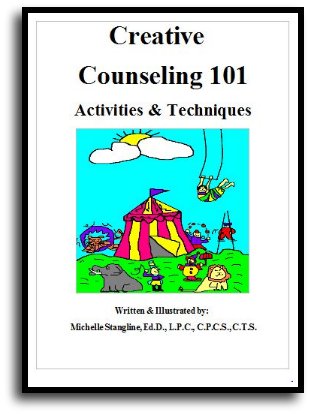
Step By Step Therapy:
Learn how to be a more Creative Therapist with the Book that started it all!
- Graduate School Counseling book used by hundreds of graduate counseling students!
- Includes full color reproducible worksheets with most activities.
- Winner of the Counselor Writer of the Year Award, 2011, Georgia Regional Award
Download Your Copy Today Only $39.95:
See Creative Counseling 101 eBook Information Here:
Get the Set
of all four
eBooks for only $98.95:
An incredible collection of how to do therapy eBooks!
A $159.80 Value,
You Save Over $60!
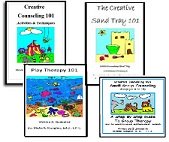
Get your complete set of the Creative Counseling 101.com eBooks by Dr. Michelle Stangline for only $98.95, that's less than $25.00 per eBook (Regular Price is $39.95 for each eBook.).
Your complete set includes:
- Creative Counseling 101
- Creative Group Counseling 101
- Creative Play Therapy 101
- Creative Sand Tray 101
For more information click the link below:
See Complete Set of eBooks For Sale Here:
New!!! "Beyond Art Therapy" 101 eBook
Over 300 pages of Beyond Art Therapy activities and techniques. Learn what I teach graduate counseling students!
See the link below for more information.
Only $39.95
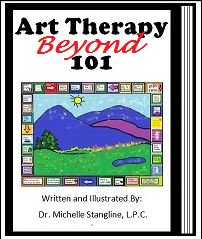
See More Invividual eBooks For Sale:
Sand Tray Therapy 101 eBook:
Learn how to do Sand Tray Therapy or enhance your skills.
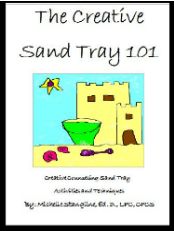
Play Therapy 101 eBook
Learn how to do play therapy or enhance your skills.
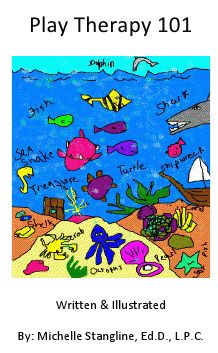
Small Group Counseling eBook For Sale:
Learn how to do creative group therapy and enhance your skills.

School Counselor Guidance Lesson & Social Stories eBook for sale:
Get a year's worth of school counselor guidance lessons with "Creative Warm & Fuzzy Classroom Guidance Lessons eBook". Introduce your students to the "Warm & Fuzzy Way". Click the link below for more information:
Warm & Fuzzy School Counselor Guidance Lessons eBook
